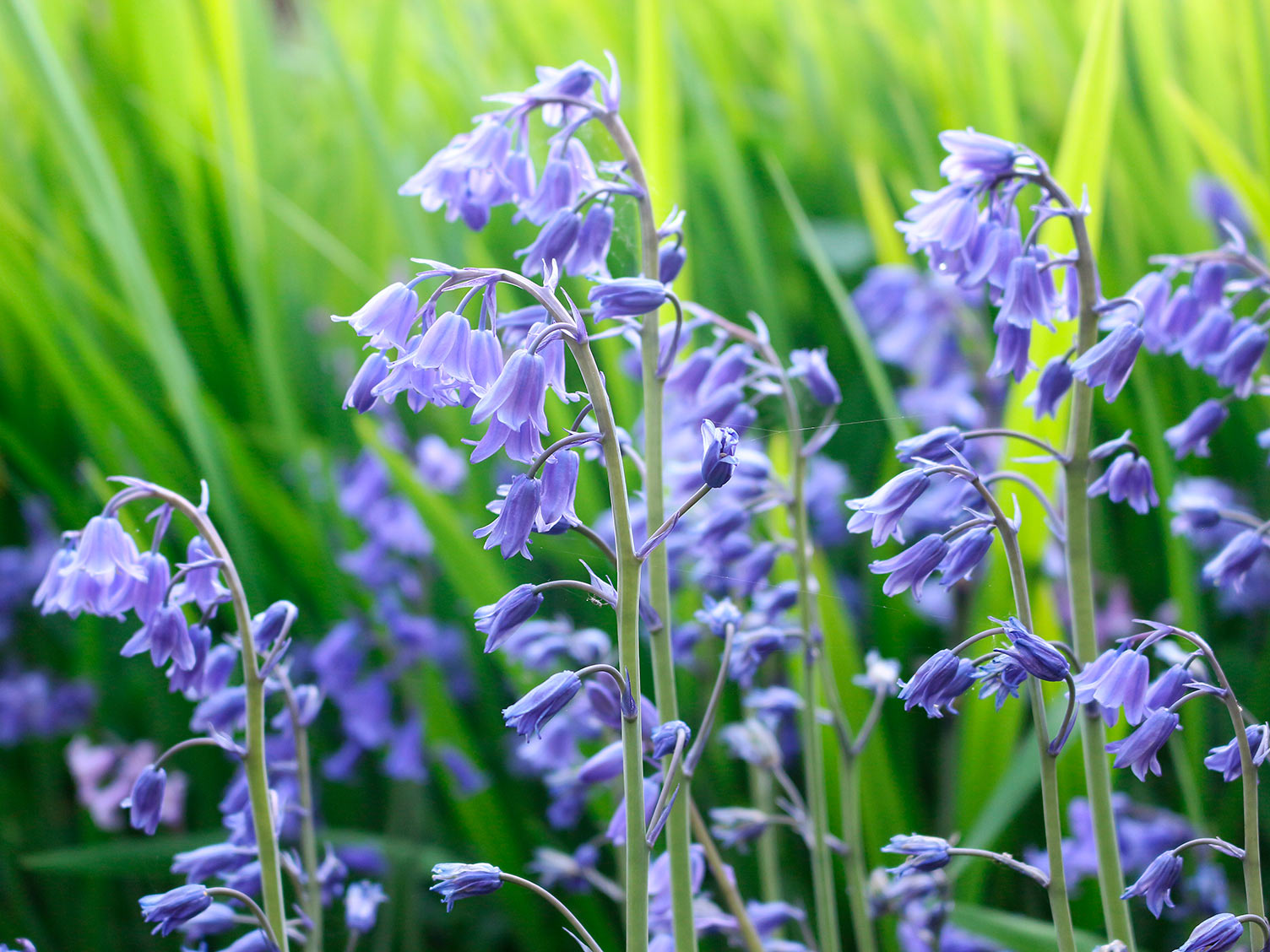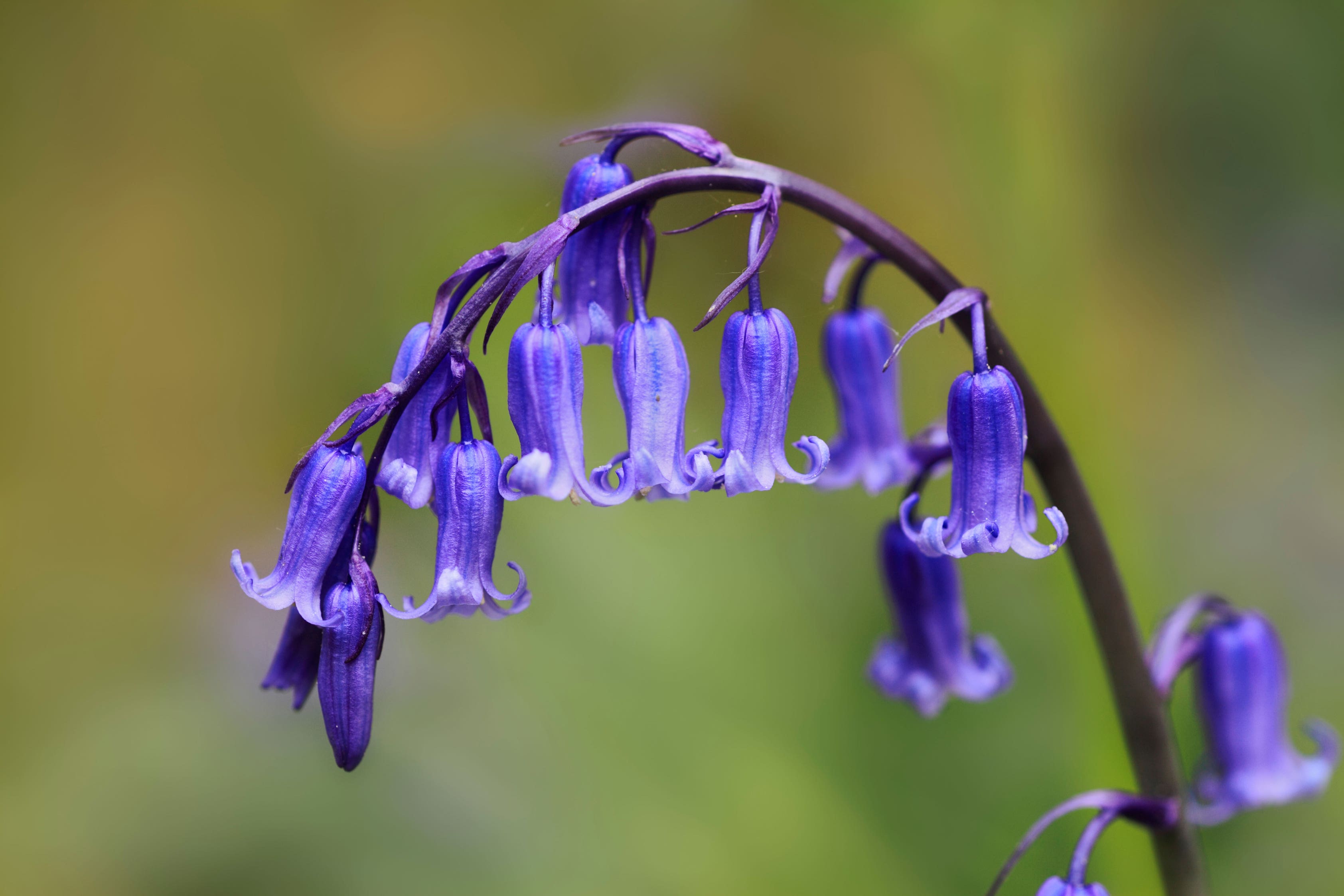What Makes Bluebells Unique: A Brief Overview
Bluebells, scientifically known as Hyacinthoides spp., are a type of flowering plant that has captivated the hearts of many with their delicate, bell-shaped blooms. These perennial plants are a staple of springtime, often carpeting woodlands, hedgerows, and grasslands with their vibrant colors. But what makes bluebells so unique, and why are they a popular choice for gardeners and nature enthusiasts alike?
One of the key factors contributing to the allure of bluebells is their ability to thrive in a variety of environments. Whether in the wild or in a carefully tended garden, bluebells are relatively low-maintenance plants that can tolerate a range of soil types and moisture levels. This adaptability, combined with their stunning appearance, has made bluebells a favorite among gardeners and naturalists.
However, the beauty of bluebells is not just skin-deep. These plants also play a crucial role in supporting local ecosystems, providing a vital source of food and shelter for various insects, birds, and small mammals. As such, accurate identification of bluebells is essential for conservation efforts and responsible foraging practices.
So, what do bluebells look like? At first glance, bluebells may appear to be a straightforward plant to identify, but their similarity to other plants can often lead to confusion. In the following sections, we will delve deeper into the key characteristics and features of bluebells, exploring their unique appearance, habitats, and growing conditions.
How to Recognize Bluebells: Key Characteristics and Features
To accurately identify bluebells, it’s essential to familiarize yourself with their distinctive features. One of the most striking characteristics of bluebells is their bell-shaped flowers, which are typically a vibrant blue color, although some varieties can be white or pink. The flowers are usually 1-2 cm long and have a sweet, honey-like fragrance.
Bluebells have slender stems that can grow up to 30 cm tall, often with a slight curve or bend. The leaves are strap-like, typically 1-2 cm wide and 10-20 cm long, with a pointed tip and a smooth, glossy texture. The leaves are often a deep green color and can be slightly hairy.
When trying to identify bluebells, it’s common to confuse them with other plants that have similar characteristics. For example, hyacinths and grape hyacinths have similar bell-shaped flowers, but they tend to be larger and more fragrant than bluebells. Hyacinths also have thicker, more fleshy stems and leaves that are more oval in shape.
To distinguish bluebells from these lookalikes, look for the following key features: the shape and size of the flowers, the length and thickness of the stems, and the shape and texture of the leaves. By paying attention to these characteristics, you can confidently identify bluebells and avoid common misidentifications.
So, what do bluebells look like? By now, you should have a good idea of the key characteristics that define these beautiful flowers. In the next section, we’ll explore the range of colors exhibited by bluebells and the factors that influence their coloration.
The Color Palette of Bluebells: Shades and Variations
One of the most striking aspects of bluebells is their vibrant color palette, which ranges from pale blue to deep purple. The exact shade of bluebell flowers can vary depending on factors such as soil quality, sunlight, and temperature. In general, bluebells tend to have a more intense blue color in areas with rich soil and partial shade.
Some notable varieties of bluebells exhibit unique color patterns, such as the ‘Albiflora’ cultivar, which has white flowers with a yellow center, or the ‘Rosea’ cultivar, which has pale pink flowers. These variations can add an extra layer of interest and beauty to bluebell displays.
It’s worth noting that the color of bluebells can also be influenced by environmental factors, such as the presence of certain minerals in the soil. For example, bluebells growing in areas with high levels of copper in the soil may have a more intense blue color.
When trying to identify bluebells, it’s essential to consider the color of the flowers in conjunction with other characteristics, such as the shape and size of the flowers, the length and thickness of the stems, and the shape and texture of the leaves. By taking a holistic approach to identification, you can accurately determine what bluebells look like and avoid common misidentifications.
In the next section, we’ll explore the typical habitats where bluebells can be found, including woodlands, hedgerows, and grasslands, and discuss the specific growing conditions they require.
Bluebell Habitats and Growing Conditions: Where to Find Them
Bluebells are typically found in woodland areas, hedgerows, and grasslands, where the soil is moist and the sunlight is dappled. They thrive in areas with rich soil and a slightly acidic pH, often growing in association with other woodland plants like ferns and wild garlic.
In terms of specific growing conditions, bluebells require moist soil that is rich in organic matter. They prefer partial shade, especially in warmer climates, and can tolerate a range of temperatures. In areas with cold winters, bluebells may go dormant during the winter months, only to re-emerge in the spring.
When searching for bluebells in the wild, look for areas with dense woodland cover, especially in areas with deciduous trees like oak, beech, and hazel. Hedgerows and grasslands can also be good places to find bluebells, especially in areas with rich soil and a history of minimal disturbance.
It’s worth noting that bluebells can be sensitive to environmental changes, such as habitat destruction, over-collection, and climate change. As a result, it’s essential to observe bluebells in their natural habitat with care and respect, avoiding any actions that could harm the plants or their environment.
In the next section, we’ll explore common mistakes in identifying bluebells, including confusion with other plants like lily of the valley, Solomon’s seal, or wild garlic. We’ll provide tips on how to avoid these misidentifications and ensure accurate identification of bluebells.
Bluebell Lookalikes: Common Confusions and Misidentifications
When trying to identify bluebells, it’s not uncommon to confuse them with other plants that have similar characteristics. One of the most common lookalikes is the lily of the valley (Convallaria majalis), which has similar bell-shaped flowers and a similar growth habit. However, lily of the valley has a more delicate appearance and a sweet, fragrant scent that is often used in perfumes.
Another plant that is often confused with bluebells is Solomon’s seal (Polygonatum multiflorum), which has similar strap-like leaves and a similar growth habit. However, Solomon’s seal has a more upright growth habit and produces white, greenish-white, or purple flowers that are arranged in a drooping raceme.
Wild garlic (Allium ursinum) is also often confused with bluebells, as it has similar leaves and a similar growth habit. However, wild garlic has a strong, pungent scent and produces white, star-shaped flowers that are arranged in a umbel.
To avoid these misidentifications, it’s essential to examine the plant carefully and look for the distinctive characteristics of bluebells, such as their bell-shaped flowers, slender stems, and strap-like leaves. It’s also important to consider the plant’s growth habit, habitat, and any other distinctive features that may help to identify it.
By being aware of these common lookalikes and taking the time to carefully examine the plant, you can ensure accurate identification and avoid any confusion. In the next section, we’ll offer advice on how to observe bluebells in the wild, including responsible foraging practices, respect for private property, and awareness of potential threats to bluebell populations.
Observing Bluebells in Their Natural Habitat: Tips and Precautions
When observing bluebells in their natural habitat, it’s essential to do so in a responsible and sustainable manner. This means being mindful of the environment and taking steps to minimize your impact on the plants and their surroundings.
One of the most important things to keep in mind is to respect private property and only observe bluebells in areas where you have permission to do so. This will help to avoid any potential conflicts with landowners and ensure that you are not damaging the environment.
It’s also important to be aware of any potential threats to bluebell populations, such as habitat destruction, over-collection, or climate change. By being aware of these threats, you can take steps to help mitigate them and protect the bluebells and their habitat.
When observing bluebells, it’s also important to be mindful of your surroundings and take care not to damage the plants or their habitat. This means avoiding any actions that could harm the plants, such as trampling or picking them, and taking care not to disturb the surrounding environment.
By following these tips and precautions, you can help to ensure that bluebells continue to thrive in their natural habitat and that you can enjoy observing them for years to come. In the next section, we’ll provide guidance on growing bluebells in gardens, including soil preparation, planting, and maintenance.
Bluebells in Gardens and Landscapes: Cultivation and Care
Bluebells are a popular choice for gardens and landscapes, and can be grown in a variety of conditions. To cultivate bluebells, it’s essential to provide them with the right environment and care. This includes planting them in well-draining soil that is rich in organic matter, and providing them with partial shade and regular watering.
When planting bluebells, it’s best to do so in the fall or early spring, when the weather is cooler. This allows the bulbs to establish themselves before the heat of summer. It’s also important to plant the bulbs at the right depth, typically 2-3 times the height of the bulb.
Once planted, bluebells require minimal maintenance. They can be left to naturalize in lawns or under trees, and can be divided and replanted every few years to maintain their health and vigor. It’s also important to deadhead the flowers after they have bloomed, to encourage the bulbs to focus their energy on re-growing and storing energy for next year’s bloom.
In addition to their beauty, bluebells also have a number of practical uses in landscaping. They can be used to create a naturalized look in lawns, or to add color and interest to woodland gardens. They can also be used to attract pollinators and other wildlife to the garden.
By following these tips and guidelines, you can successfully grow and care for bluebells in your garden or landscape. In the next section, we’ll discuss the conservation status of bluebells, including any threats they face and efforts to protect and conserve them.
Conservation Status and Threats: Protecting Bluebell Populations
Bluebells are a protected species in many countries, and their populations are threatened by a number of factors, including habitat destruction, over-collection, and climate change. Habitat destruction, such as the clearance of woodlands and hedgerows, can lead to the loss of bluebell populations and the fragmentation of remaining habitats.
Over-collection, particularly for the horticultural trade, can also threaten bluebell populations. Bluebells are often collected from the wild for use in gardens and floral arrangements, which can lead to the depletion of natural populations.
Climate change is also a significant threat to bluebell populations. Changes in temperature and precipitation patterns can alter the timing of bluebell flowering, making it more difficult for the plants to reproduce and set seed.
Efforts are being made to protect and conserve bluebell populations, including the creation of protected areas and the implementation of sustainable management practices. For example, some woodland owners and managers are adopting sustainable forestry practices that prioritize the conservation of bluebells and other woodland species.
In addition, many organizations and individuals are working to raise awareness about the importance of bluebell conservation and the threats that they face. By working together, we can help to protect and conserve bluebell populations for future generations.








:max_bytes(150000):strip_icc()/spanish-bluebells-late-blooming-spring-bulb-2132115-05-410faa0a44254c83ac859889a2d6b499.jpg)
